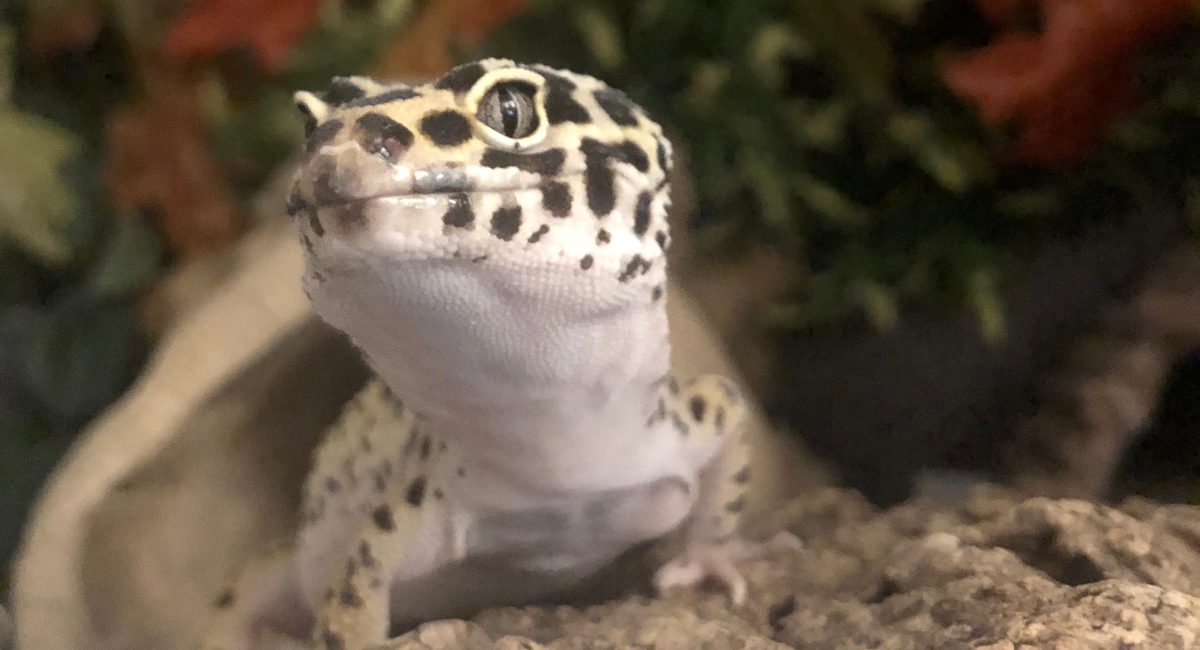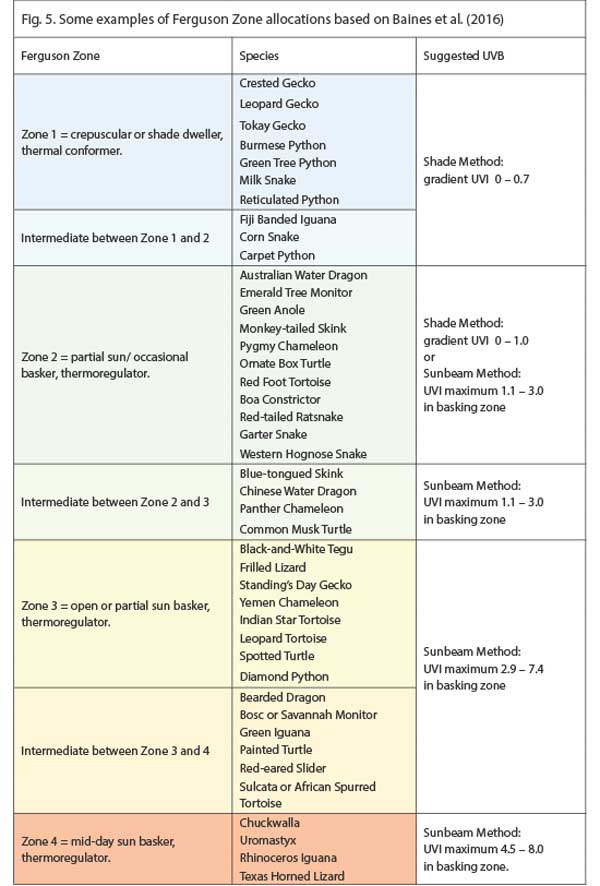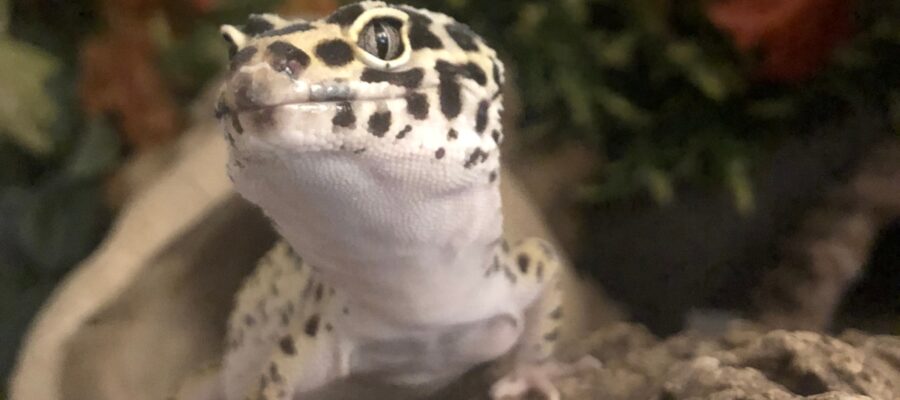Among leopard gecko owners, breeders and even researchers, there seems to be a lack of consensus over whether leopard geckos need an artificial UV light source within their enclosure, so this can be confusing to owners trying to take the best possible care of their leopard geckos.
I encourage you to also read up on this topic to come to the most informed decision possible, but in this brief post I will summarise some of the studies/opinions I have read, and also comment on what I do for my own reptiles.
Note: When we talk about a UV light source, this is different from using a heat lamp which is a separate topic!

What is UV light?
The sun is a source of the full spectrum of ultraviolet radiation, which is subdivided into UV-A, UV-B, and UV-C rays; the long wavelength fraction is UVA (320-400 nm), the shorter-wavelength fraction is UVB (290-320 nm), and UV-C rays are the shortest and most harmful but are almost completely absorbed by our atmosphere (source: NASA).
Why does UV light matter to reptiles?
- It is an effective disinfectant that can destroy bacteria, fungi and viruses on the surface of the skin
- It can strengthen skin barrier functions
- It increases pigment formation and modulation of the skin’s immune responses
- It stimulates production of beta endorphins
- It induces nitric oxide production, which has localized protective effects on skin cells.
UVB lighting is also used for vital bodily functions…
As we know, vitamins are extremely important to reptiles; UVB converts a natural cholesterol in the skin of reptiles to pre-vitamin D3. Warmth converts the pre-vitamin D3 into vitamin D3. Vitamin D3 is used for vital functions throughout the body, including reptiles’ ability to store and use calcium.

Without Vitamin D3, all the calcium added to your reptile’s diet, whether naturally occurring or dusted on using calcium dust supplements, is put to no use, leading to serious problems like metabolic bone disease (MBD). This means your reptile’s skeleton can’t develop properly and cannot support their weight, often causing huge amounts of pain when moving and may cause the crushing of internal organs (source: Swell Reptiles).
But leopard geckos avoid the sun in the wild, don’t they?
Some reptiles such as leopard geckos do not bask in the sunlight – they are crepuscular (active just before sunset or just after sunset) and spend nearly the entire day hidden away in their natural habitats and also in captivity.
Levels of UVB in these deeply shaded places may be very low, and some species also appear to have very low vitamin D3 requirements (source: Frances M. Baines) but they could still be receiving some level of it for many hours per day, so it is easy to see why owners struggle to know whether they need to provide any additional UV lighting in their vivariums for a leopard gecko.
The chart below from Baines et al (2016) shows the different species of reptile and their typical exposure to UVB rays in their natural habitats, along with the suggested UVB levels if an owner were to add an artificial light source. Leopard Geckos fall into the category requiring the least amount of UVB rays.

UVB rays cannot penetrate glass (source: SkinCancer.org) therefore it is unlikely that a leopard gecko in captivity would be exposed to any natural sources of this type of light, even if it was housed in a well-lit room and exposed to some brightness during the day.
So should I provide a UV light to my leopard gecko?
Leopard gecko owners are divided on this topic. Some prefer to mimic the natural habitat as much as possible and provide a UV lamp, whereas some provide vitamin D3 by using supplements. I currently fall into the latter category, but this is subject to review and monitoring of my geckos (as with most things) and ongoing research, so if I started noticing any health related issues which could be due to a vitamin D3 deficiency, or learned of a new study that convinced me otherwise, then I would consider getting a lamp.
If you DO choose to provide a UV lamp…
What is very important is that if you do choose a UV lamp, to make sure it’s the right intensity for your leopard gecko. As discussed above, their requirement for UV lighting is low compared to virtually all other reptiles, so a lamp which is too bright could be harmful (especially to albinos which have an even lower tolerance for UV light). A post which I have frequently cited in this blog post by Dr Frances Baines gives much more detail on the correct UV light intensity than I could possibly could, so please take a read here. As I do not use one myself, I do not wish to give out advice on which bulbs to use.
If you DON’T choose to provide a UV lamp…
What is equally important is that if you don’t use a lamp, you need to make sure your gecko’s diet is supplemented with vitamin D3 which can be bought in powder-form, from many online retailers (such as Amazon) and pet suppliers. From what I have seen, the main cause of scary health issues like MBD in leopard geckos is caused by a poor diet, so if you choose not to use a UVB lamp then you must be mindful of this.
As always, it is important that you monitor your gecko’s health to notice any changes, ensure they have a good diet and always try to keep educated about common issues with keeping them as pets.
Get Your Free Leopard Gecko Care Checklist!
Are you ready to give your leopard gecko the best care possible? Download our FREE PDF e-book featuring a comprehensive care checklist!
This handy guide covers everything from habitat setup to feeding and health tips, ensuring your gecko thrives.
👉 Download your checklist now!




